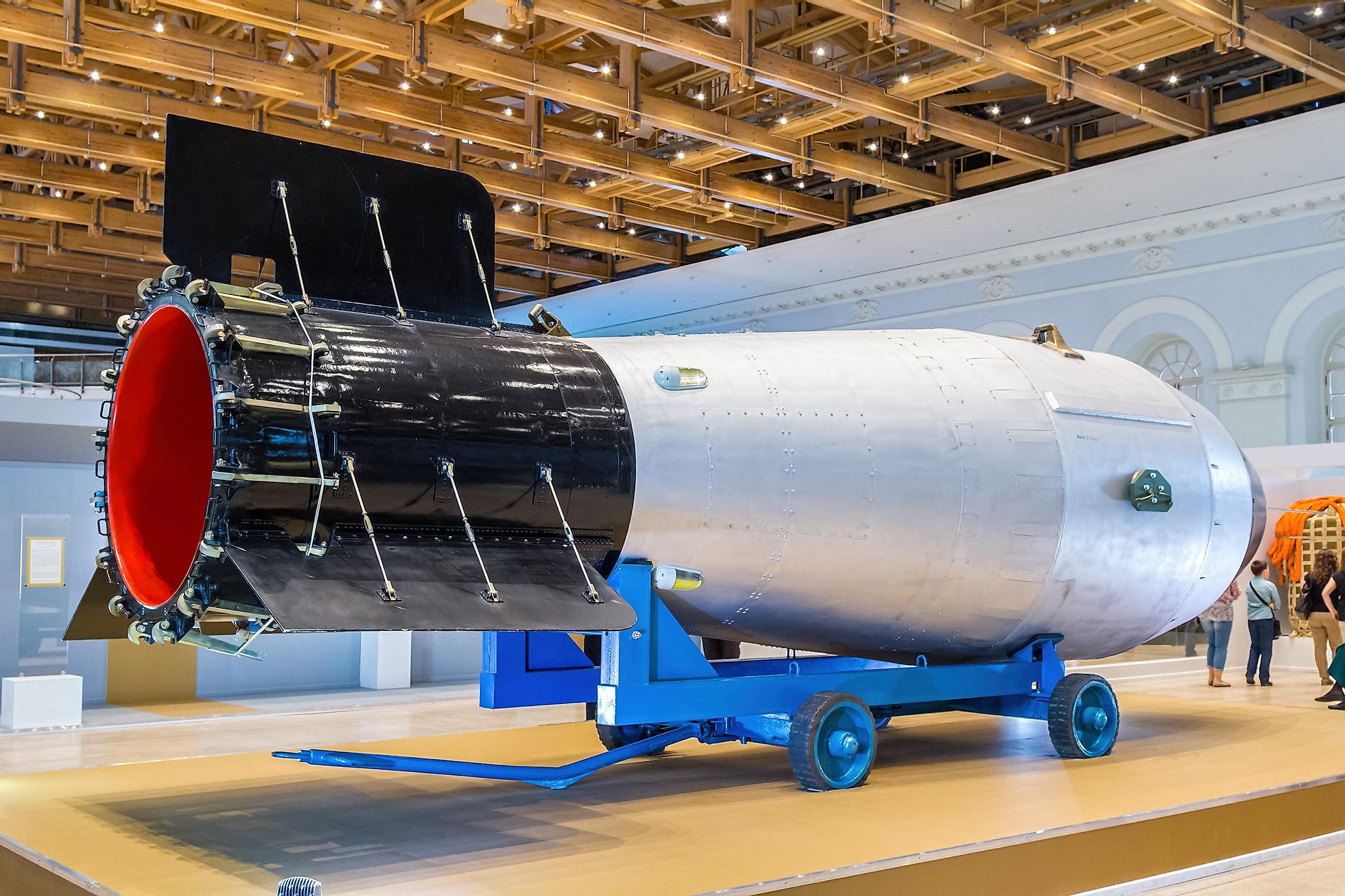

Entry into a nation’s weapon stockpile requires considerable engineering effort and planning to ensure a satisfactory stockpile lifetime, provision for required maintenance, a variety of safety and security mechanisms, development of suitable delivery techniques and equipment for combat use, development and approval of operational doctrine, institution of a suitable training program, development of a list of suitable targets and operational plans, etc., etc.” The only Tsar Bomba test detonation on October 30, 1961. One scholarly analysis of the test device says, “A test device, even one that is air-dropped like an operational weapon, is not suitable for normal military stockpiling (although it could be employed as a weapon in an emergency). Tsar Bomba was likely never intended as an operational air-delivered bomb. And while there were overlapping layers of Soviet nuclear bomber defense around the U.S., there were also overlapping shortcomings in those defenses, and the Soviets were guaranteed to have exploited those shortcomings in a first strike on the U.S.Īnd with a weapon like Tsar Bomba, you can afford to miss many times, you only have to score one or two hits to do inconceivable damage. Other systems shared similar, if not as severe, shortcomings. Bright, Ph.D., pointed out in his research publication, “Continental Defense in the Eisenhower Era” (2010, Palgrave Macmillan), that the BOMARC missile system was only “marginally effective” (Pp.151, “Conclusion”). The CIM-10C BOMARC system alone was an example of a Cold War air defense system that, on the best of days, would have only been marginally effective. strategic air defense system was, at times, incredibly fallible. While this multi-layer strategic air defense system around America seemed “Fail-Safe” at the time, the reality, revealed publicly only after the Cold War ended, was very different. response to a nuclear first strike from the Soviet Union was automated, especially detection of unknown radar contacts approaching the U.S.
#The tsar bomba series
Strategic defenses in the Cold War were built up of concentric rings of distant early warning radars, air defense fighters, long range anti-aircraft missiles with nuclear warheads like the CIM-10C BOMARC and a series of decreasing range nuclear and conventionally armed surface-to-air missiles (SAMS) like the Nike Hercules and Nike Ajax. Because of its size, it was carried partially outside of its specially-modified Tu-95 called the “Tu-95V”.Ī weapon like Tsar Bomba would have been difficult for the Soviet Union to deploy in a first strike nuclear attack on America. Tsar Bomba was so enormous, 8m (26ft) long with a diameter of almost 2.6m (7ft) and weighing an unbelievable 54,000 pounds, that it dwarfed America’s largest nuke, the puny 9-megaton B53 air delivered bomb weighing in at “only” 8,850 pounds. As Russia vaults ahead in a promising new era the country has been increasingly willing to disclose its shadowy past, and the new film of Tsar Bomba underscores how lethal aspects of the Cold War truly became.īut the new Tsar Bomba film raises an interesting question could a bomb of this size have ever been used by the Soviet Union against the United States? The answer is: maybe. The film becomes available as Russia has undergone significant advancement since the collapse of the Soviet Union in 1991. This year, new film of the only test of Tsar Bomba was released from Russia. on Jduring the Trinity tests of the Manhattan Project, and continues to this day.īut the tipping point of the balance of terror maintained between the Soviet Union and the United States reached its apogee on the day that Tsar Bomba was tested, and this test underscored the accelerating insanity of nuclear proliferation and the concept of “Mutually Assured Destruction” or “MAD” that kept both sides from pushing the nuclear button. Tsar Bomba was the ultimate and most terrifying manifestation of the nuclear era, an age that began with the first nuclear detonation by the U.S. Even the Soviets were surprised by how powerful the enormous bomb was. The bomb was dropped from a specially modified Tupolev Tu-95, NATO Codename “Bear”, a unique swept-wing, four-engine turboprop still in service today that flew for the first time in 1952, the same year as America’s B-52 Stratofortress.Įvery statistic about Tsar Bomba’s destructive power is difficult to grasp.

Tsar Bomba was detonated over the remote Novya Zemlya area, on a desolate archipelago called Mityushikha Bay test range, test field D-2, Novaya Zemlya Island, that juts into the Barents Sea in the former Soviet Union.


 0 kommentar(er)
0 kommentar(er)
